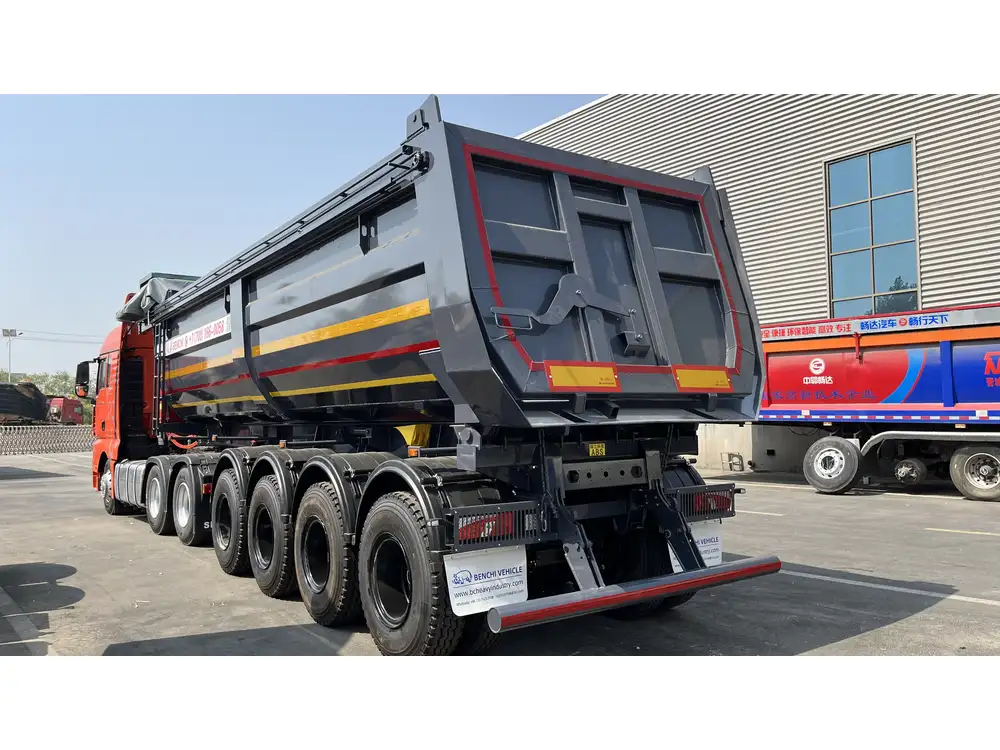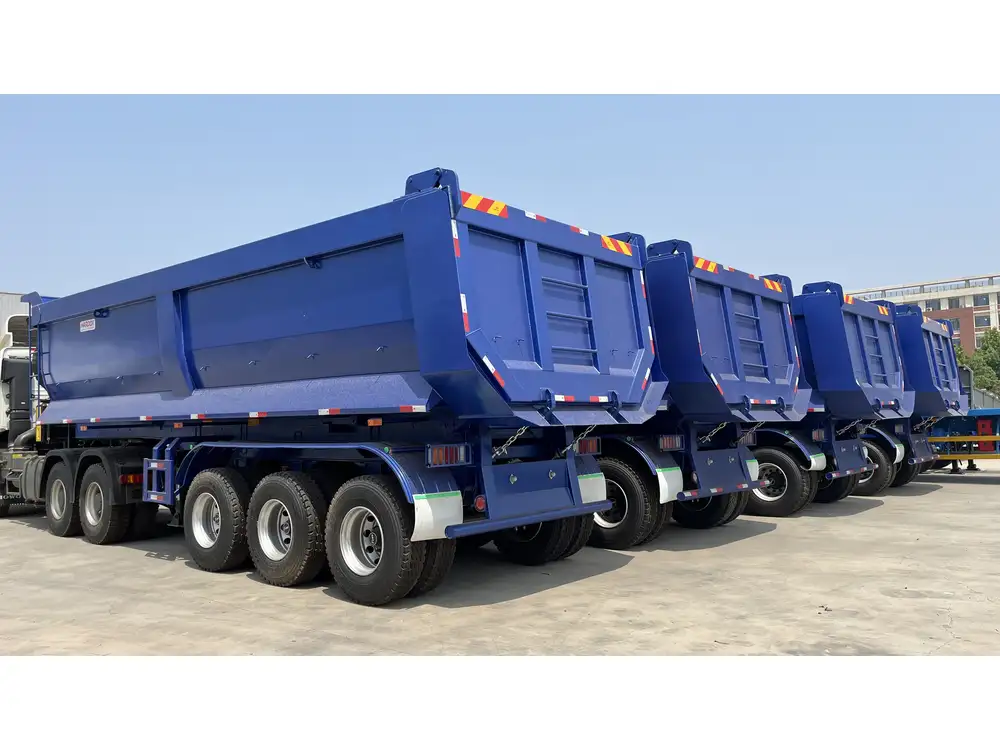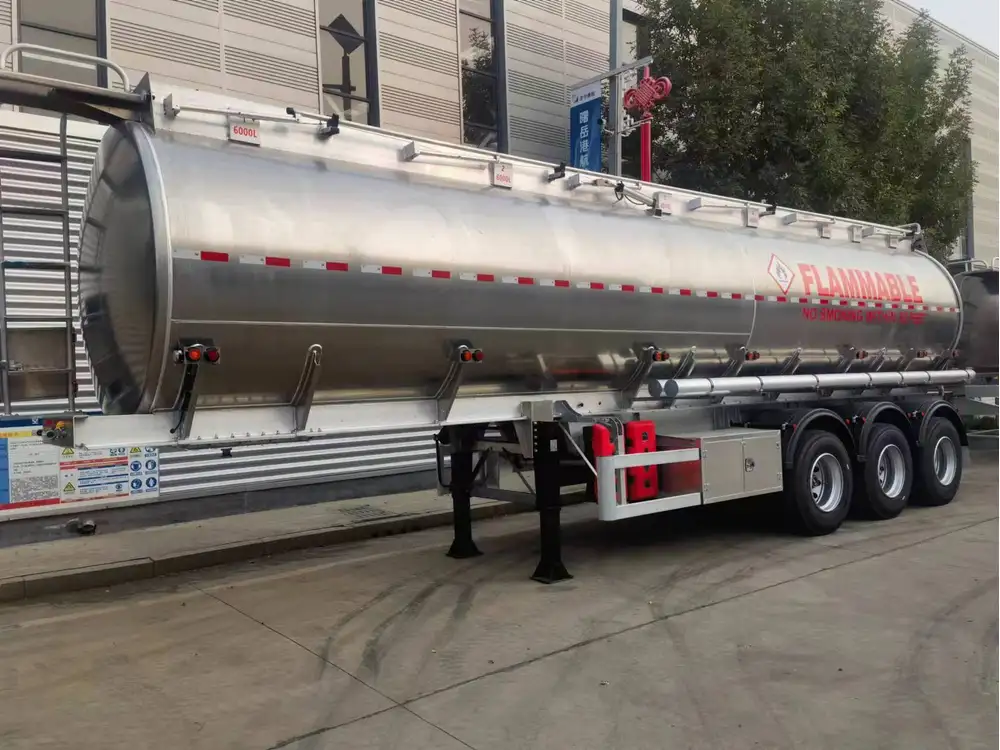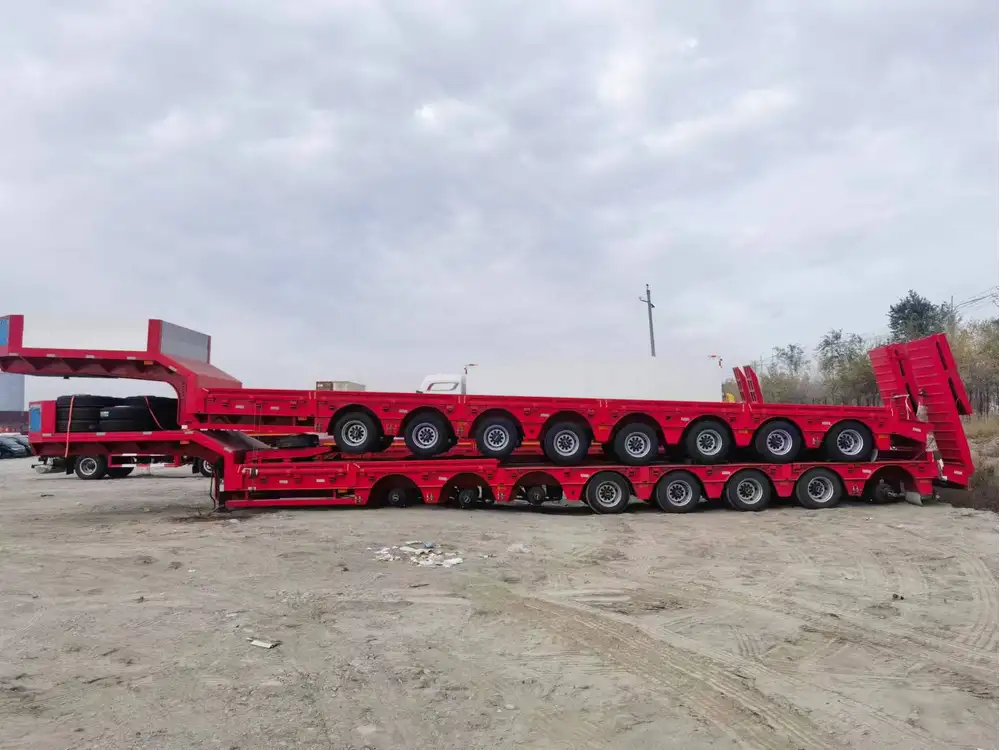Building a dump trailer is an endeavor steeped in a rich tapestry of engineering principles, design methodologies, and practical craftsmanship. In this guide, we delve into the intricate steps, techniques, and components necessary to create a functional and efficient dump trailer, tailored for those who wish to embark upon this rewarding project.
Understanding Dump Trailers: What Sets Them Apart?
Before diving into construction, it’s paramount to understand what defines a dump trailer. Essentially, a dump trailer is a versatile vehicle designed primarily for transporting loose materials like gravel, sand, or debris. It operates using a hydraulic lift system that facilitates the dumping of contents. This unique functionality distinguishes dump trailers from standard flatbed trailers, making them indispensable for construction, landscaping, and agricultural applications.
Key Components of a Dump Trailer
| Component | Function |
|---|---|
| Chassis | The framework provides structural integrity. |
| Axles | Support the weight and allow for mobility. |
| Hydraulic System | Powers the lifting mechanism for dumping. |
| Bed/Cargo Area | The space where materials are loaded. |
| Tires | Ensure traction and stability during transport. |
| Safety Features | Includes brakes, lights, and reflectors for safety. |

Necessary Tools and Materials
To build a dump trailer, gathering the right tools and materials beforehand is crucial. Below is a comprehensive list:
Tools Required
- Welding machine
- Angle grinder
- Tape measure
- Level
- Screwdrivers (various sizes)
- Wrenches (metric and imperial)
- Hydraulic pump for lifting mechanism
- Drill press
Materials Needed
| Material | Specifications |
|---|---|
| Steel Plates | Mild steel for the frame and bed; gauge varies. |
| Hinges | Heavy-duty hinges for the dumping mechanism. |
| Hydraulic Cylinder | Match capacity to expected load and height. |
| Axles | Ensure suitable weight rating and length. |
| Wheels and Tires | Chosen based on load-bearing requirements. |
| Electrical Wiring | For lighting and hydraulic system. |

Step-by-Step Process to Build a Dump Trailer
Embarking on the journey of building a dump trailer consists of several essential steps, outlined below for clarity and precision.
Step 1: Designing the Trailer
Design is paramount in building an efficient dump trailer. Assess your needs based on:
- Intended Use: Will it be used for landscaping, construction, or personal projects?
- Size: Determine the dimensions based on what materials you plan to transport.
- Load Capacity: Understand the weight limits your trailer will need to accommodate.
Once you determine these factors, create a detailed blueprint. Utilize design software or graph paper to lay out the frame, bed, axle position, and hydraulic system.
Step 2: Constructing the Frame
- Cut Steel Plates: Using the measurements from your design, cut the steel plates to form the trailer’s frame.
- Weld the Frame: Assemble the cut plates into a rectangular shape. Ensure that corners are reinforced, and the structure is level.
- Attach the Axles: Secure the axles to the frame. The position of the axles significantly impacts the trailer’s weight distribution and towing stability.

Step 3: Building the Bed
- Frame Construction: Create a rectangular frame for the bed using steel angles, then reinforce it with cross members.
- Bed Material: Use thicker steel plates for the bed to withstand the rigorous use of dumping heavy materials. Ensure proper welding across all edges to prevent gaps.
Step 4: Installing the Hydraulic System
- Positioning the Hydraulic Cylinder: Attach the hydraulic cylinder at the front of the bed, near the pivot point, ensuring it can exert enough force to lift the load.
- Mounting the Hydraulic Pump: Securely mount the hydraulic pump and connect it to the cylinder. Ensure all connections are leak-proof and follow the manufacturer’s specifications.
Step 5: Final Assembly and Testing

Electrical Wiring
- Install the electrical components including lights, taillights, and any indicators required for safety compliance.
- Ensure that all wiring is secured and protected from potential damage.
Test the System
Conduct multiple tests before regular use:
- Lift Function: Test the hydraulic lift with varying loads to ensure functionality and safety.
- Towing Capability: Test with a vehicle to ensure balance and braking efficiency.
Safety Precautions
- Always wear safety gear, including gloves, goggles, and steel-toed boots.
- Operate the welding equipment in a well-ventilated area.
- Ensure connections in the hydraulic system are secure to prevent leaks.

Troubleshooting Common Issues
Even with meticulous planning and construction, issues may arise. Here are some common problems and their solutions:
| Issue | Solution |
|---|---|
| Hydraulic system fails to lift | Check fluid levels and inspect for leaks. |
| Bed not leveling correctly | Realign hydraulic cylinder or adjust pivot point. |
| Unstable while towing | Ensure load is evenly distributed and check axle alignment. |
Enhancing Dump Trailer Functionality
To maximize the utility of your dump trailer, consider these enhancements:
- Adjustable Axle Placement: Modify axle position based on load distribution.
- Add Side Extensions: These can increase side height, useful for transporting loose materials.
- Implement a Removable Tailgate: This offers versatile loading and unloading options.
Maintenance Tips
Regular maintenance ensures longevity and efficiency of your dump trailer. Key practices include:
- Inspect hydraulic fluid levels routinely; replace as necessary.
- Regularly check the integrity of welds and bolts.
- Clean the bed after use to prevent rust and corrosion.

Conclusion
Building a dump trailer is a project that combines skill, design, and engineering principles, resulting in a highly functional tool for transporting materials. By adhering to the outlined steps, investing in quality materials, and considering ongoing maintenance, you can create a reliable dump trailer tailored to your specific demands. Embrace the journey of construction, and transform your ideas into a practical reality that meets your transportation needs while optimizing efficiency and performance.
Frequently Asked Questions
How long does it take to build a dump trailer?
The duration depends on your level of experience and the complexity of the design, but it typically ranges from one weekend to several weeks.

What is the legal towing capacity for a homemade dump trailer?
This varies by region, so check with local regulations to ensure compliance, especially if you intend to transport heavy loads.
Can I modify my dump trailer later?
Yes, modifications can be made especially concerning the hydraulic system, hitch, and cargo bed size depending on evolving needs.
Having a comprehensive understanding of the steps required and potential challenges will empower you to successfully embark on the journey of building your very own dump trailer.



